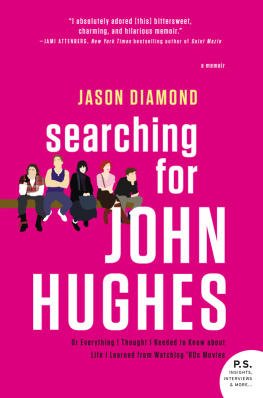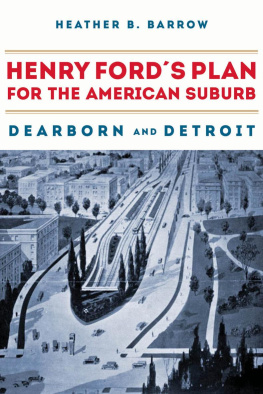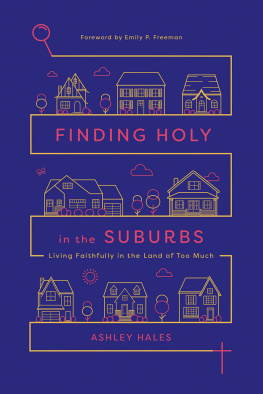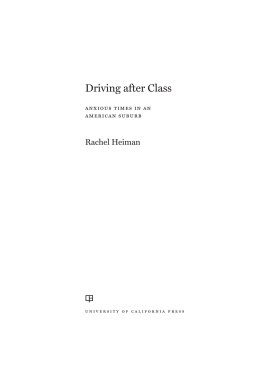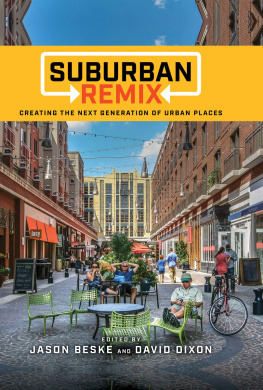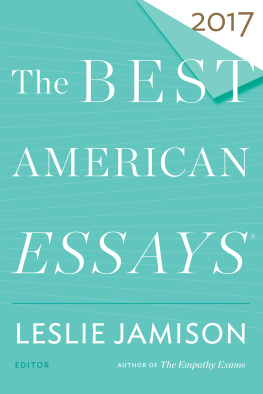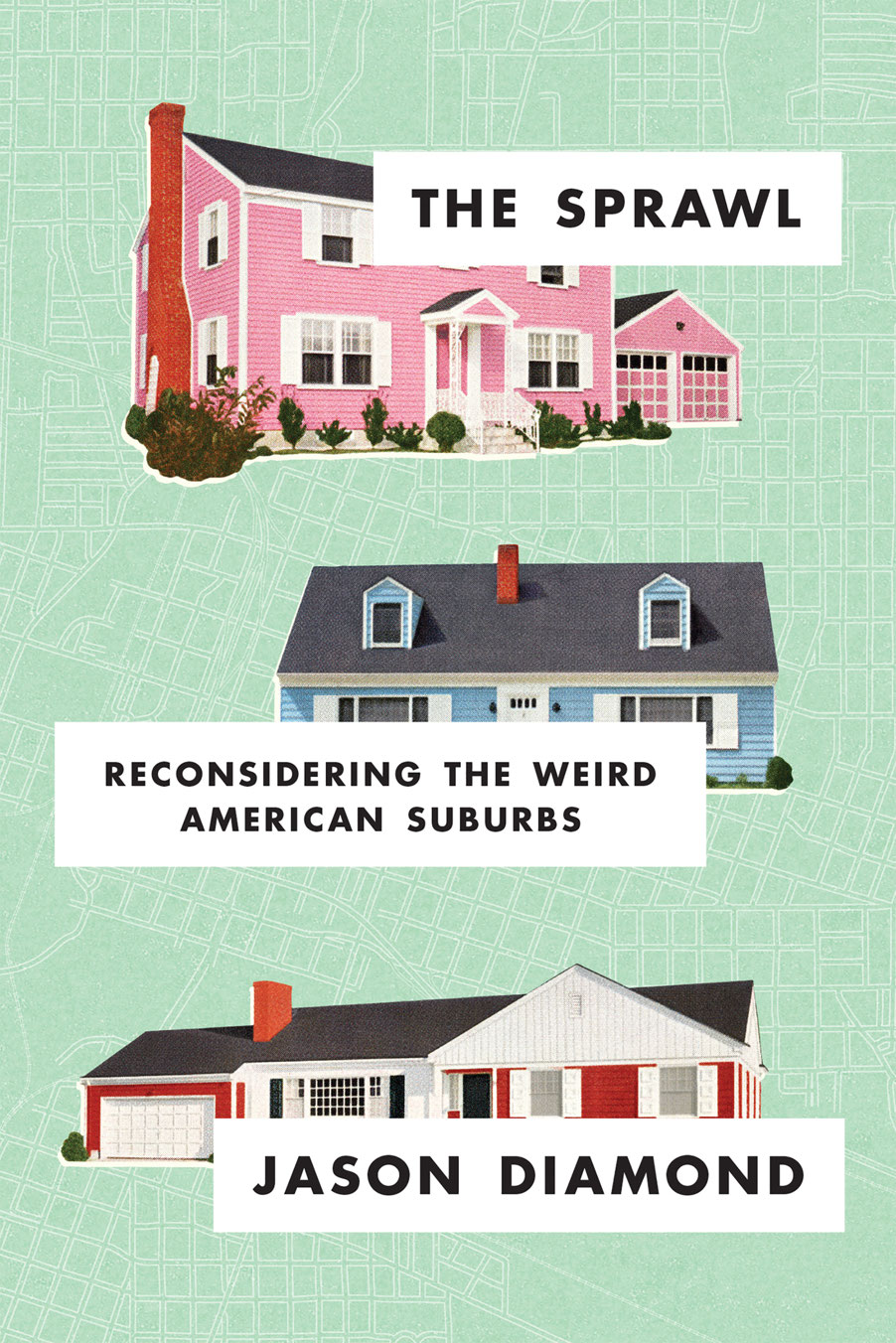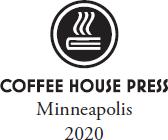THE SPRAWL
THE SPRAWL
Reconsidering the Weird American Suburbs
JASON DIAMOND
Copyright 2020 by Jason Diamond
Cover design by Kyle G. Hunter
House cover art iStock.com/CSA-Printstock
City map cover art iStock.com/phleum
Book design by Rachel Holscher
Author photograph Isaac Fitzgerald
Coffee House Press books are available to the trade through our primary distributor, Consortium Book Sales & Distribution, cbsd.com or (800) 283-3572. For personal orders, catalogs, or other information, write to info@coffeehousepress.org.
Coffee House Press is a nonprofit literary publishing house. Support from private foundations, corporate giving programs, government programs, and generous individuals helps make the publication of our books possible. We gratefully acknowledge their support in detail in the back of this book.
LIBRARY OF CONGRESS CATALOGING-IN-PUBLICATION DATA
Names: Diamond, Jason, author.
Title: The sprawl : reconsidering the weird American suburbs / Jason Diamond.
Description: Minneapolis : Coffee House Press, 2020. | Includes bibliographical references.
Identifiers: LCCN 2020015243 (print) | LCCN 2020015244 (ebook) | ISBN 9781566895828 (paperback) | ISBN 9781566895903 (ebook)
Subjects: LCSH: Suburban lifeUnited States. | SuburbsUnited States.
Classification: LCC HT352.U6 D52 2020 (print) | LCC HT352.U6 (ebook) | DDC 307.740973dc23
LC record available at https://lccn.loc.gov/2020015243
LC ebook record available at https://lccn.loc.gov/2020015244
PRINTED IN THE UNITED STATES OF AMERICA
27 26 25 24 23 22 21 20 1 2 3 4 5 6 7 8
To Emily. Youre my home no matter where I am.
Though you have done nothing shameful,
they will want you to be ashamed.
Wendell Berry
Contents
Preface
Im suburban; Im of the suburbs. Ive spent my entire adulthood in cities, but I still get nostalgic when I smell freshly cut grass. It brings me back to the malls of my youth, to the food court at Town Center at Boca Raton, the mall we used to go to whenever I visited my grandparents in South Florida, or the old tobacco store in some forgotten shopping center in the middle of the country. I love grilling meat on a Weber grill I spent an hour trying to light, and by God, I miss not having a never-ending stream of cars honking outside my window.
It took me a long time to admit any of that. I was, at best, ambivalent about where I come from, but filled with pure hate is more like it. Whenever somebody asked, I always told them I was from Chicago. Thats the way most people do it, right? If youre from Round Rock, Texas, youll say youre from Austin. If you grew up in Fountain in a house with four bedrooms, a two-car garage, and a big backyard, you just tell people Colorado, because they wont know your hometown. If youre from Long Island, ran on the cross-country team, and lived in a quiet little subdivision but moved away to college and never looked back, youll tell anyone who asks youre from New Yorkwhich isnt wrong. You just hope they assume you mean Manhattan and not Hicksville, which is over an hour away.
Yet getting to a place where I could clearly and honestly tell people yes, I grew up in suburbia, in neighborhoods up and down Lake Michigan, took a long time. I left as a teenager and immediately started telling people I was from Chicago. I never looked backuntil I did.
After an adulthood spent mostly in two of Americas biggest cities (Chicago and New York City), the suburbs came back into my life in my midthirties. It started slowly: weekend trips to my in-laws house outside Hartford, Connecticut, in a whimsical little town called Avon in the shadow of Talcott Mountain. From their backyard, you can look up and see Heublein Tower, the castle A.1. sauce and Smirnoff vodka manufacturer Gilbert Heublein built his wife in the early twentieth century. You can walk barefoot around my father-in-laws immaculately green grass and gaze at the hawks as they circle or watch the woodchucks scatter about. Its country quaint, but its suburbia, no doubt. Drive five minutes and theres a Chilis, an antiques dealer/coffee shop, a hotel bar I sometimes sneak away to for a quiet drink, a few car dealerships, some elite private schools, a couple of local farms that sell pumpkins and cider, and a golf coursethen another golf course, and another. Its Gilmore Girls cozy with a deliberate small-town feel baked into the city plans, even though the population reaches over 18,000, and the bulk of the housing is from the twentieth and twenty-first centuries. Its all thanks to that postwar boom; the place jumped from 1,738 residents in 1930 to 11,201 fifty years later, in 1980.
I hear a lot of debate over what is and isnt a suburb. My general rule of thumb for including somewhere in the is category tends to be when the population of a place has increased since World War II, but industry hasnt been added to lure people there. So when houses and grocery stores and coffee chains and places of that nature pop up in locations where things were traditionally made or grown, that generally is a sign that a place is suburban. Its not always the case, but people moved to the little town of Avon, for example, to work in nearby cities, such as Hartford, a fifteen-minute drive away. Avon became a suburb out of necessity.
There isnt all that much to do in this small suburban town, and frankly, thats nice to me. Its still and quiet. I dont have to worry about getting on the subway and dealing with people coughing on me or some guy clipping his fingernails between taking bites of a burrito (yes, Ive actually seen this). There arent sirens and jackhammers and people yelling outside my window. When I go to my in-laws, butterflies flutter around in the summertime and theres a fireplace to sit by in the winter. In the city, theres the dirt-and-god-knows-whatever-else-covered snow, and rats, lots of rats. That all said, I think Ill spend the rest of my life in cities. The suburbs are nice to visit, but at this point, more of my life has been lived as an urbanite than not; everything else feels like a vacation. Im part of that group of younger Generation Xers and older millennials who moved back to cities after our parents and grandparents left to build a better life, with backyards and places to park their station wagons. And Im pretty sure Im staying put.
But who knows?
The American suburbs were the great promise to the baby boomers. If you were white and middle class, a little piece of the postwar pie was yours for the taking in the years after World War II. Suburbia was the idea of the good life, something humans had been looking to attain for centuries but only the wealthy could afford: a place outside the city. After the war ended, that dream became more attainable, especiallyand this needs to be repeatedif you were white. The Federal Housing Administration, starting in 1934 and all the way until 1968, graded neighborhoods from A to D. Areas with large black populations usually received the lowest grade, and those same black people who wanted to make a change were shut out of attaining loans to help them afford housing in newer, nicer, safer areas. This is enough to make any sane person want to rebel against the idea of the suburbs, a place that actively kept groups of people out. But as Ill show, theres more that has colored our view of what the suburbs are and arent. We have so many ideas of what we think suburbia is, yet we dont realize how suburban weve become, whether we live in a suburb or not.


